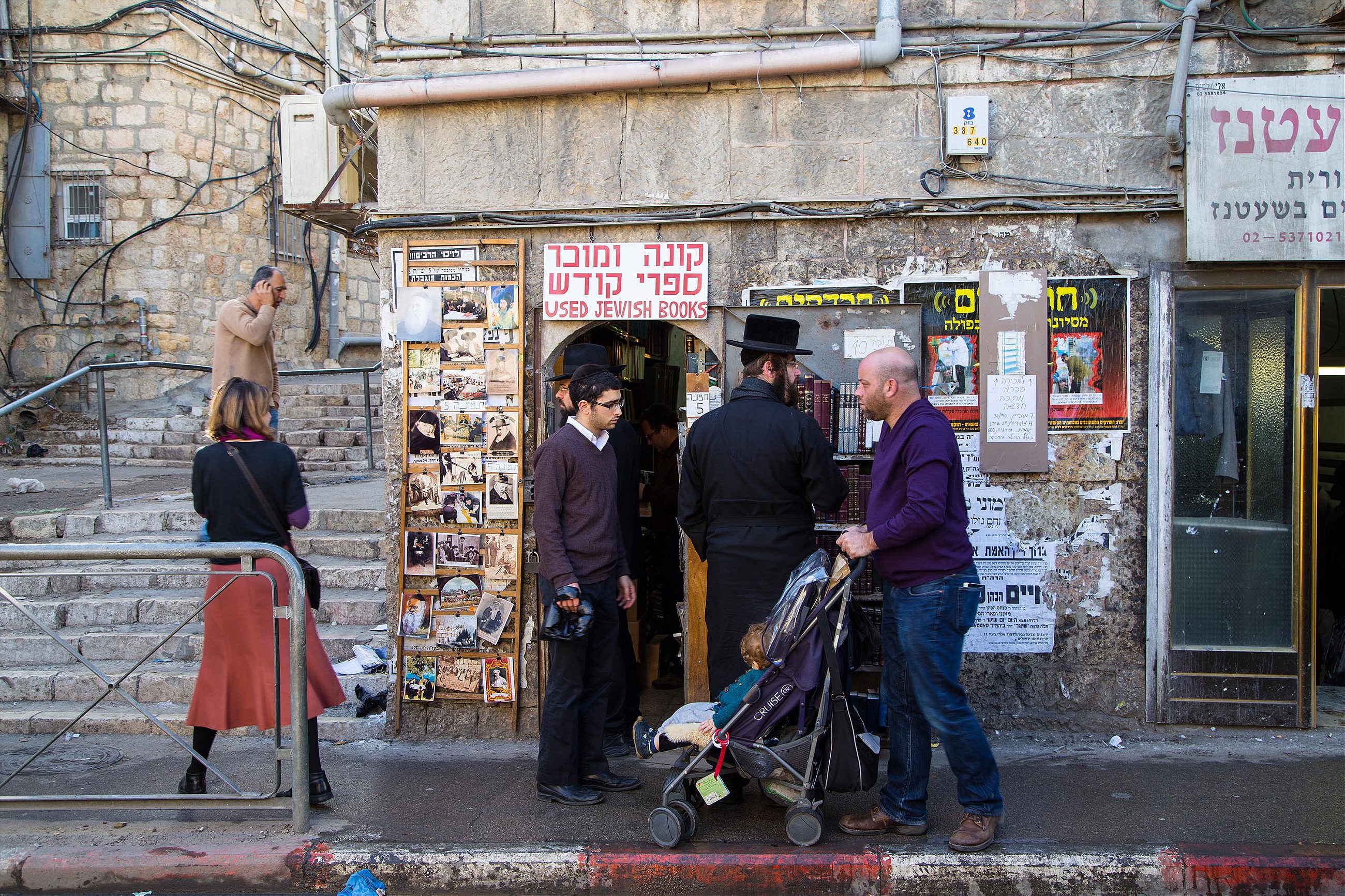In Jerusalem’s ultra-Orthodox Mea Shearim neighborhood, feeding the secular and religious both.
Cutting through the cramped alleys of the Jerusalem’s religious Mea Shearim neighborhood is Malkhei Yisrael—a main drag that worldlier members of the city like to call the ultra-orthodox Oxford Street, where the God-fearing haredi go to shop.
Crowded with bearded men sporting wide-brimmed black hats and women wearing wigs and bonnets, the street and its shops cater to a very specific market. The bookshops have a wide variety of sephorim (holy tracts) and the music stores have stacks of CDs of religious songs (for modesty reasons, only male voices). Even the mannequins in the children’s clothes shops—and there are many, many children here—are appropriately topped with kippot. As for the toyshops, they sell Torah playsets and snap cards featuring wonder rabbis, next to more prosaic items like bats and balls. At intervals along the street, beggars sit rattling their collecting tins, providing residents with an opportunity to perform a good deed.
On Friday morning, there is an added sense of urgency. The Sabbath is coming, and so no work must be done from sunset on Friday until sunset the following day. There is a very important mitzvah to prepare for: oneg Shabbat, enjoying the Sabbath, and for that you need food.
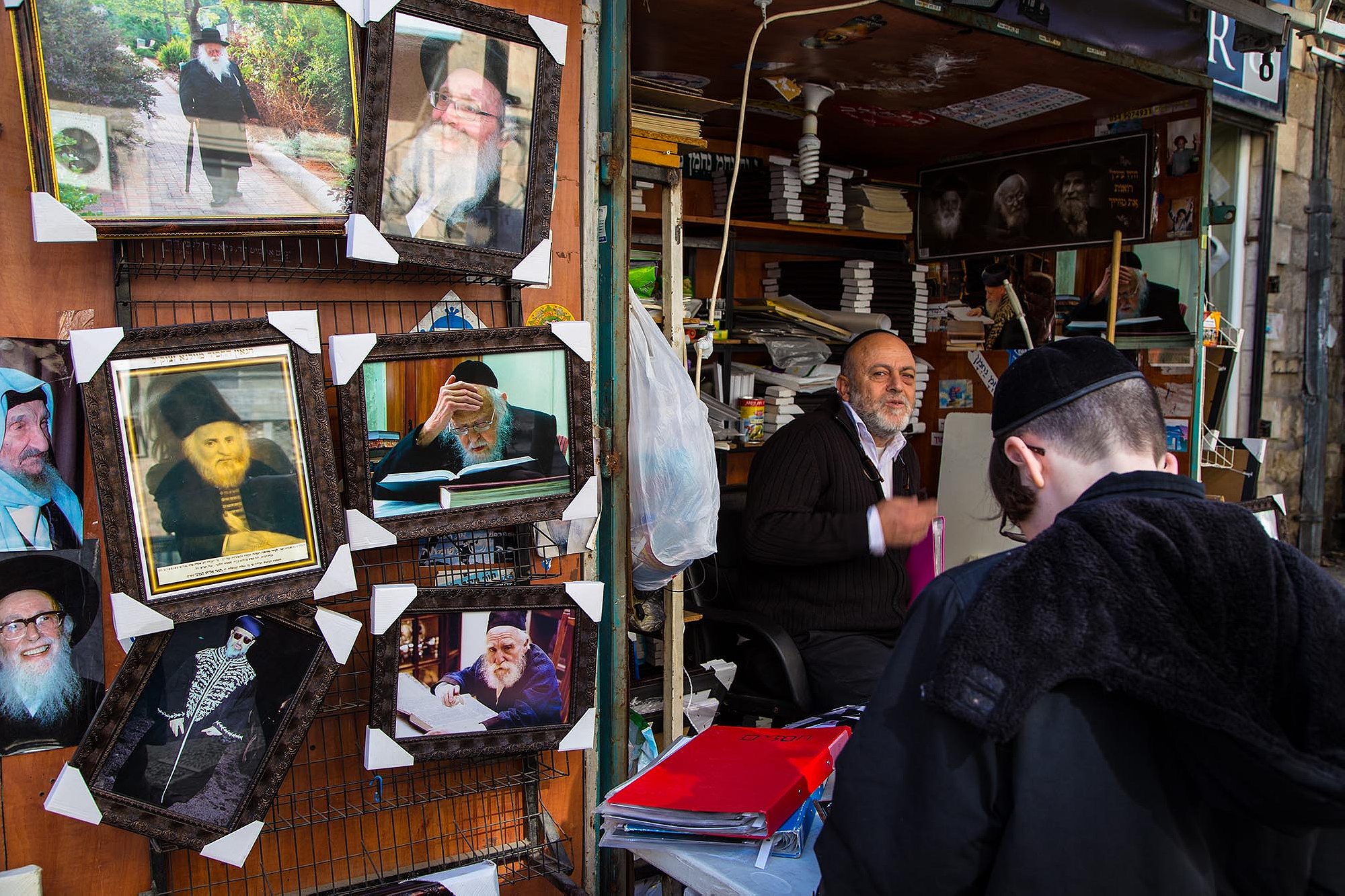
Up and down the main street, shoppers are buying plastic sacks of freshly popped popcorn. It’s cheap, it comes in giant quantities suitable for sharing with numerous children, and it’s parve—containing neither milk nor meat.
The taste is redolent of a world long past
The delis and takeaways are doing a furious business in shabbat staples. There’s unctuous chopped liver topped with gribenes (crispy shreds of rendered chicken skin), trembling slabs of calf’s foot jelly and heaps of ravioli-like stuffed kreplach. Kugel Yerushalmi, a tall, round noodle pie flavored with black pepper and caramel, comes sliced like a cake, and for the fish course there’s tubs of herring, serried ranks of jellied heads, and poached balls of minced carp, served cold and slightly sweetened.
At first glance, the cuisine is as understated as the resolutely monochrome outfits worn by the devout themselves. These dishes come mainly in shades of brown, with the odd blast of colour provided by beetroot-pickled herring or boiled carrot slices atop gefilte fish.
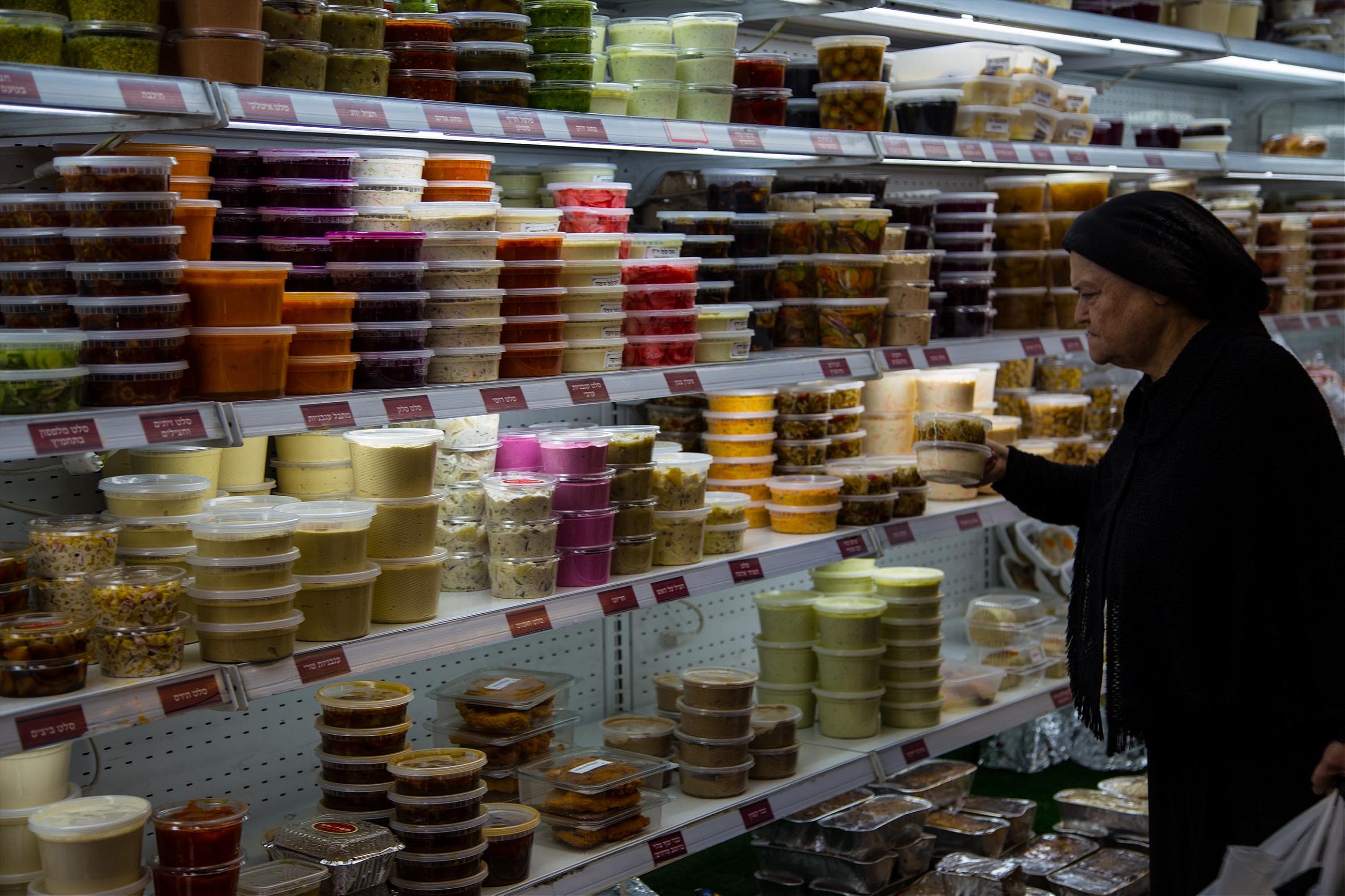
But the taste, say aficionados, is redolent of a world long past, of generations of Jewish mothers and grandmothers tending bubbling cauldrons in shtetls from Pinsk to Ponevezh.
“It’s food for shabbos that makes you feel excellent. It’s a special feeling you can’t explain!” says one elderly man with a long white beard and a shopping basket full of sliced kugel.
Mea Shearim—literally “one hundred gates”—was established in the nineteenth century, the second Jewish neighborhood built outside the walls of the Old City. Originally surrounded by a wall to deter intruders and bandits, Mea Shearim and its residents now rely on different means to keep outside threats at bay. For starters, posters greet visitors at the entrance to the neighborhood, entreating female visitors to dress modestly. No low necklines, tight-fitting clothes or, heaven forfend, trousers.
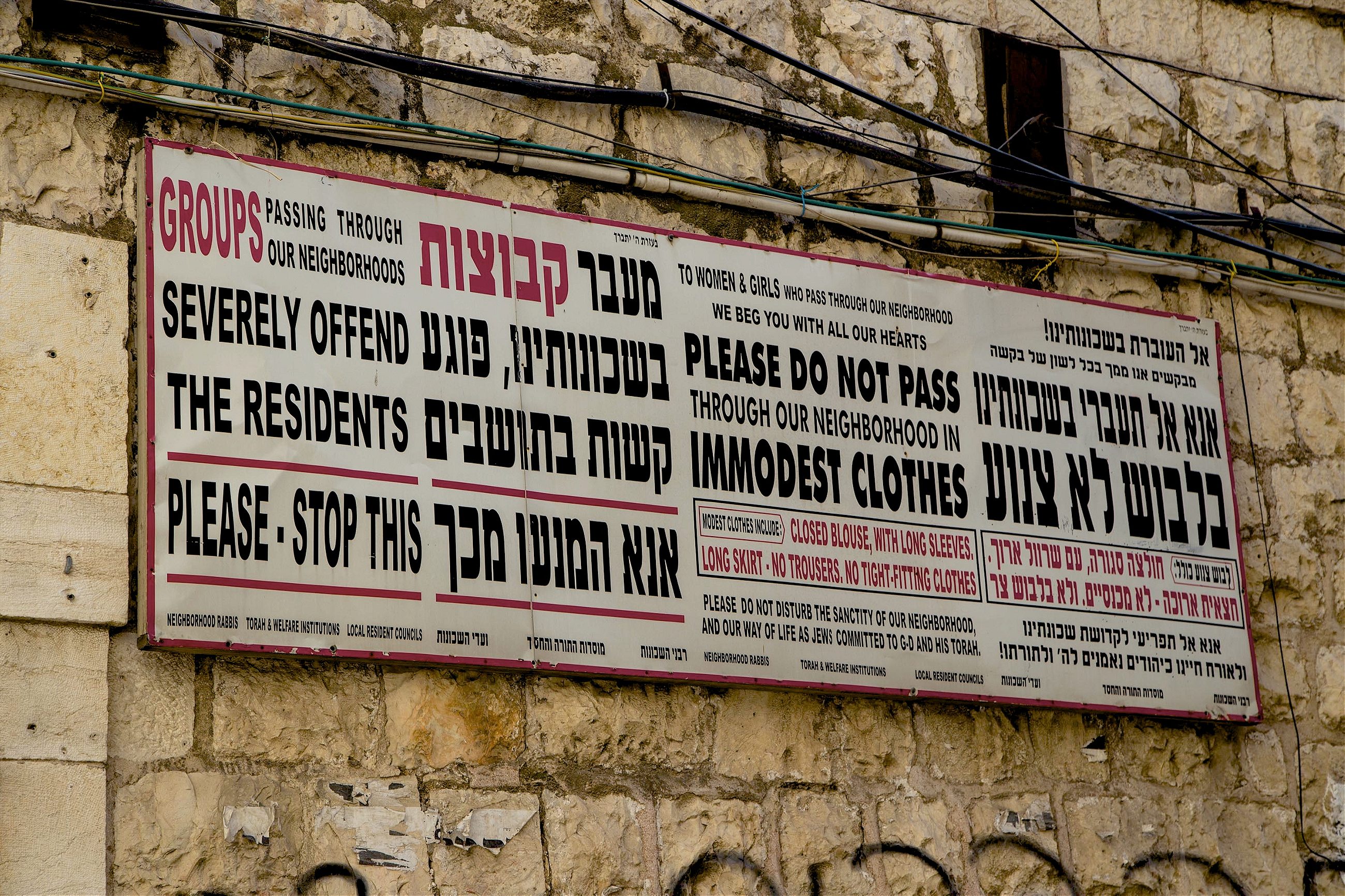
The haredim–those who fear God–are perceived as hostile to outsiders, resolutely separate from the rest of Israeli society. People here are shy of being photographed or interviewed. Modesty is a concept that extends beyond the covering of flesh, and few people are willing to be identified by name. Locals generally tolerate the tourists, keeping their gaze averted, but act or dress inappropriately and boys may throw stones.
One of the biggest sources of tension is the haredi unwillingness to serve in the Israeli army, otherwise mandatory for all Jewish 18-year-olds. The ultra-orthodox largely manage to avoid through a series of historic exemptions. Studying torah also protects the Jewish nation, according to their argument.
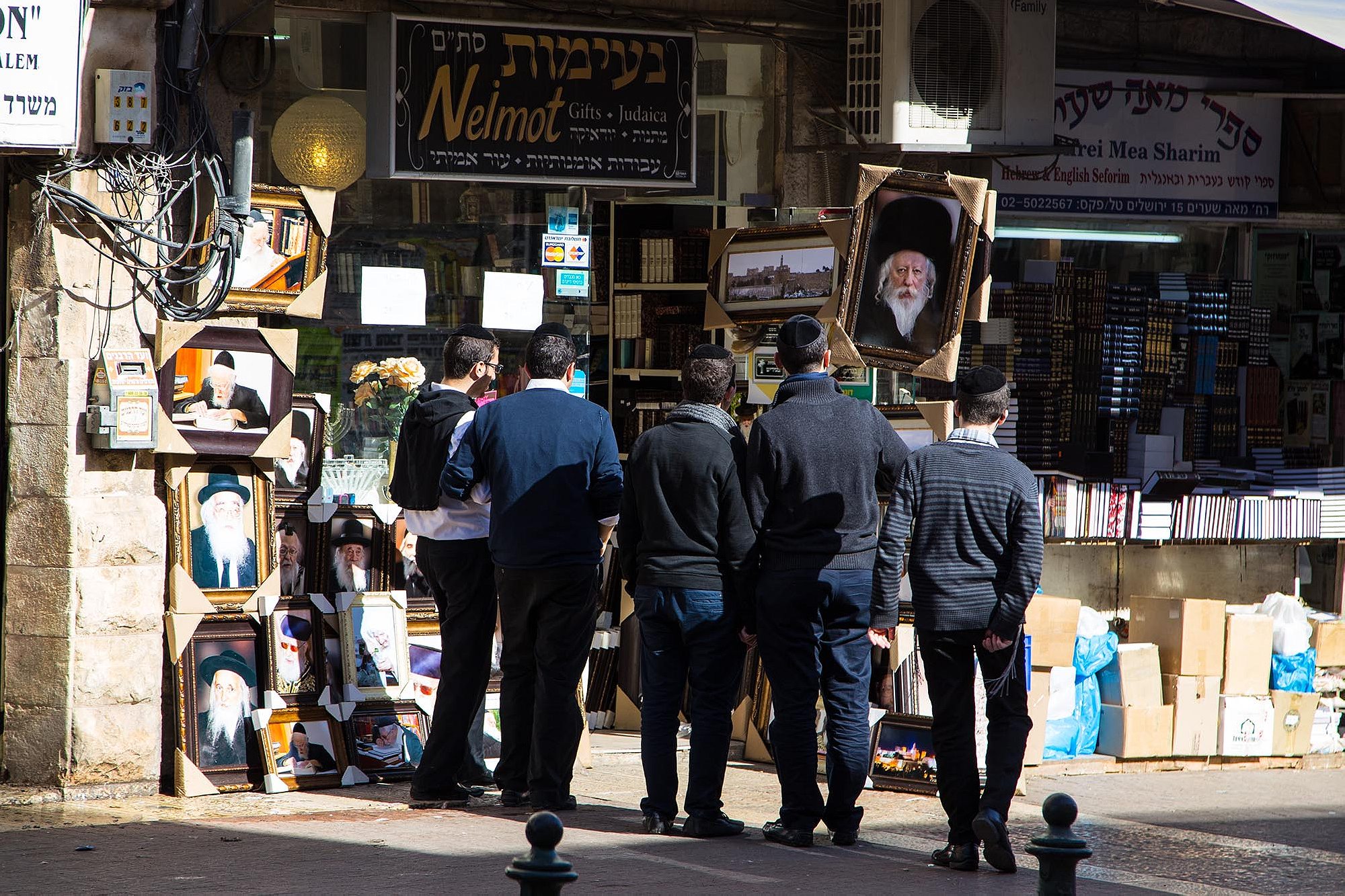
The walls of the neighborhood are plastered with pashkevils, black-and-white notices of the latest deaths and rabbinical decrees, mostly warning of the dangers of integration into secular life. Among them are full-color posters featuring a picture of a haredi soldier taking off his “filth”–his uniform–before changing into his traditional garb. “Haredim who serve in the army are infesting our society,” the poster warns.
For secular Israelis, Mea Shearim might as well be on another planet.

Nonetheless, they like to venture to this unknown world in their occasional forays into religious experience. These visitors are easy to spot: the men are bare-headed or wear knitted skullcaps awkwardly perched on their heads, and the women stumble along in long skirts.
But still they come for the treasures of the district. A set of phylactery charms, for instance, even if barely used after bar mitzvah, holds an added cachet if sourced from the holy lode stone of Mea Shearim. And the challah is universally loved, even if the ungodly of Tel Aviv like to turn it into French toast on a Saturday morning (unthinkable to religious people who refrain from any kind of cooking on the sabbath). How much sweeter the taste, if it comes suffused with centuries of tradition.
There are organized groups running food tours of this most enigmatic neighborhood; others wish to taste the famous pastries venture forth on their own. “The pastry’s absolutely amazing,” sighs one visitor wandering through with a bag of cakes.
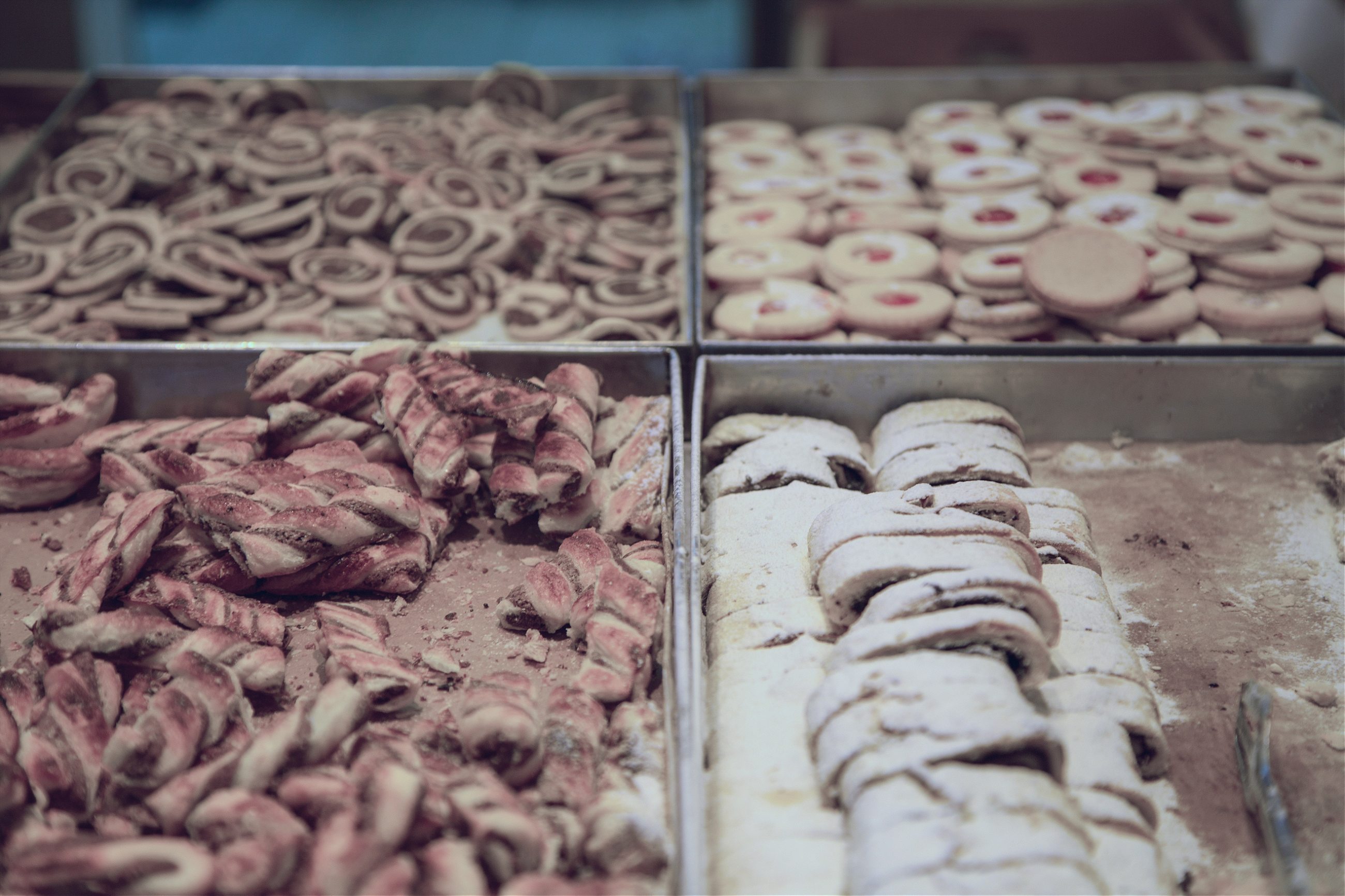
“It brings back memories,” says another tourist softly. “The challot, the bread, the pastries, that’s what we grew up on.”
The shopkeepers nod sagely when asked why secular people like the food here. It’s the “pintele yid”—the indestructible spark of Jewishness—that draws them, I’m told.
“I guess everyone wants a taste of home,” muses the man behind the counter at Shtisel Restaurant. “We’re all Jewish and we all date back to the same places—and that’s it.”
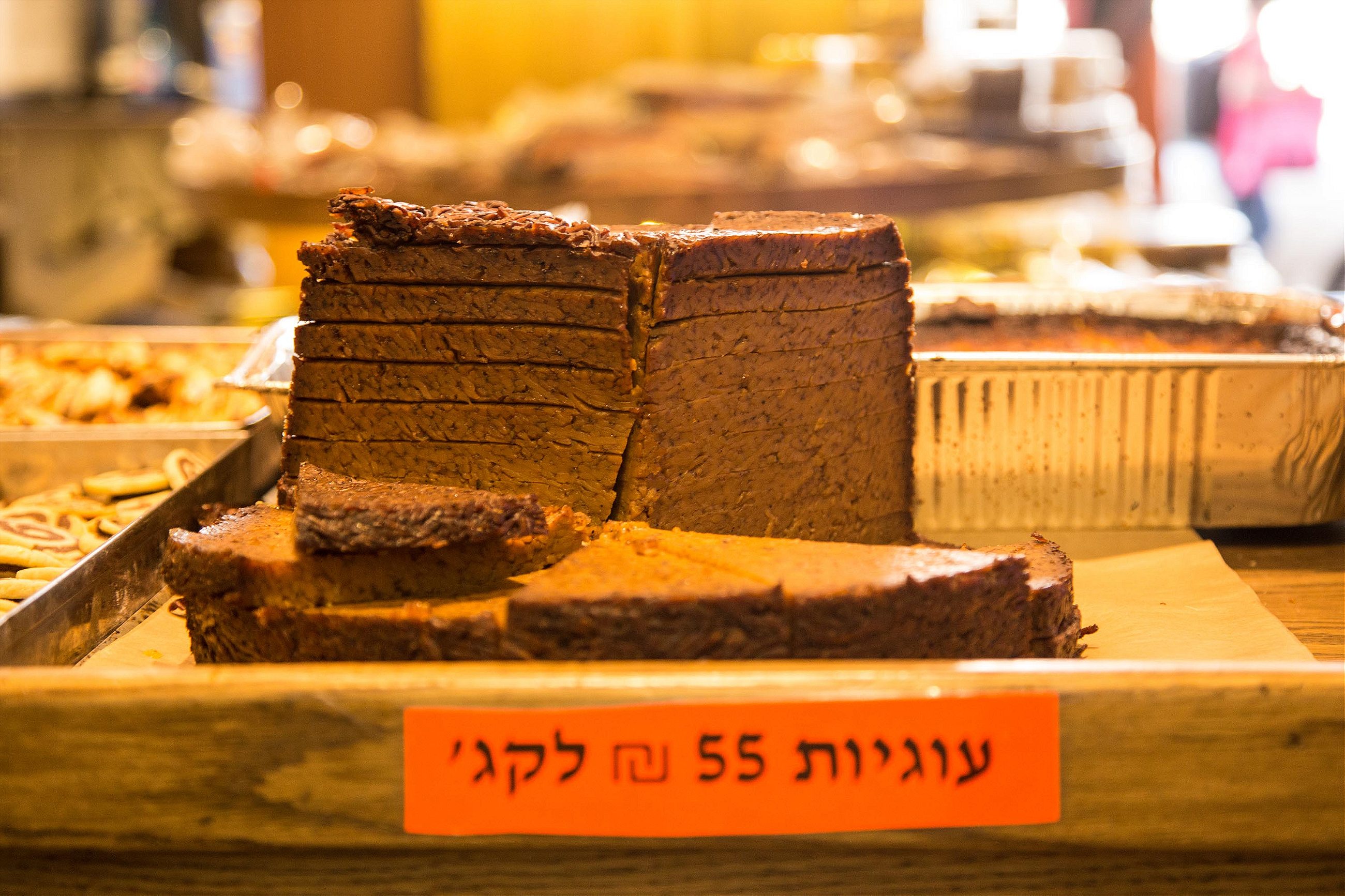
Shtisel is famous (and not just because it’s the name of a popular TV show centered on the romantic lives of the haredi in Mea Shearim). The restaurant is small, and crowded, but there are six tables in the back where you can sit to eat chulent stew scooped from a giant tureen simmering on a hot plate. It’s an Ashkenazi shabbat lunchtime staple: beans, barley, potatoes and beef cooked very gently overnight into a savory state of collapse. Additions could be mahogany-hued eggs, cooked in their shell atop the simmering dish, kishke, stuffed intestine, or chicken necks.

It may be distinctly unprepossessing, but it’s the ultimate comfort food. “That’s why I come here,” one yeshiva student enthuses. “The chulent is superb, and really that’s the main thing.”
Of course, the full array of Ashkenazi food has been complemented over the years by more recent introductions. The Mea Shearim delis now all serve hummus and eastern salads such as matbucha, a spicy tomato and pepper jam.
Benzi Hachamutzim—Bentzi the pickle man—stocks herring and salted cucumbers, naturally, but also crowds his fridges with aubergine done a dozen ways and an entire section devoted to olives as well as every root vegetable you can imagine macerated in vinegar or oils.
Fresh juice stalls and falafel stands are dotted along Malkhei Yisrael, and the legendary Gerlitz bakery has added pistachio cream torte and lemon meringue pie to its traditional offerings of sticky chocolate rugelach and those strangely tasteless jam rings which seem to be a staple of every kosher bakery in the world.
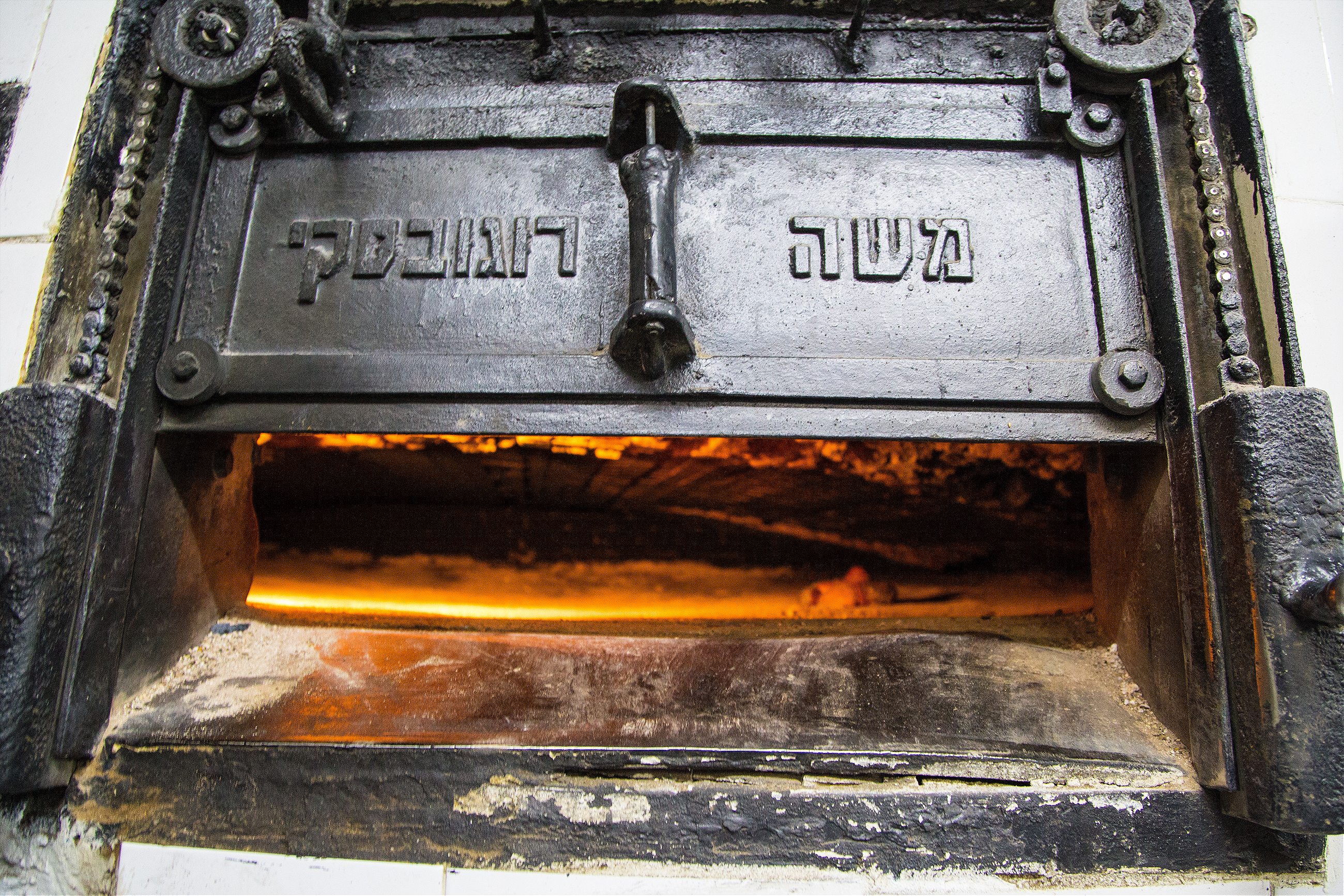
But some culinary traditions here remain unchanged and deeply treasured. Off the main drag, Lendner Bakery is such a Jerusalem institution that a nearby street is named after its nineteenth-century founder, Moshe Dov Lendner.
Inside, his 83-year-old grandson Mati sits at a small desk, handing out golden-brown, braided challah in three sizes—the largest to be blessed and shared after synagogue prayers, the medium size for Shabbat lunch, and the smaller ones—selling at 7 and a half shekels—for those who can’t afford anything more.
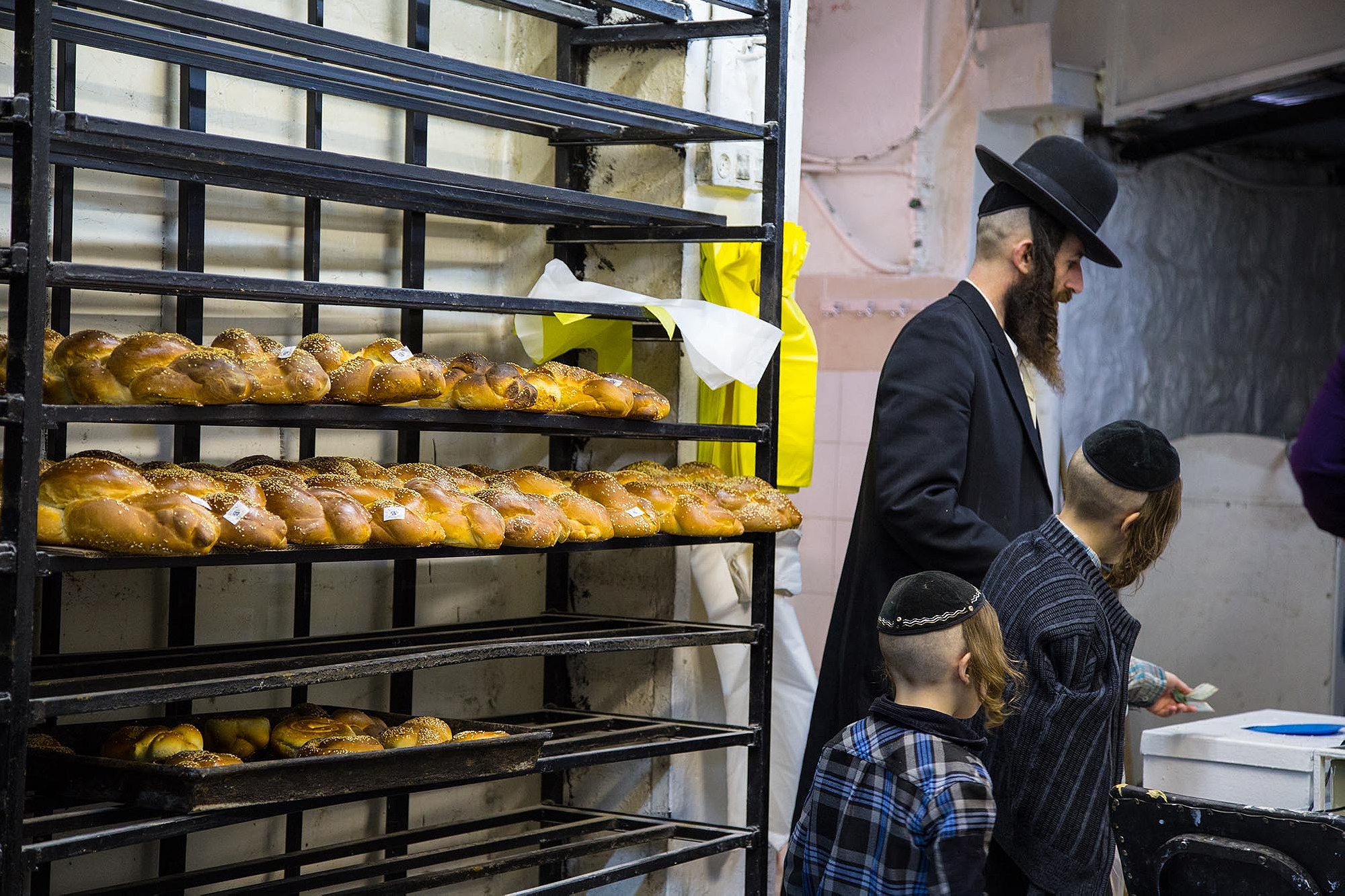
On Thursday, the bakery stays open all night, baking without a break until noon on Friday, and the oven, which bears the date it was installed (1887) is still warm from its night’s work. A woman in a short black wig comes over and mutters to Mati quietly. He gestures her over to the trays full of challot. “She hasn’t money to pay and has 10 children,” he says.
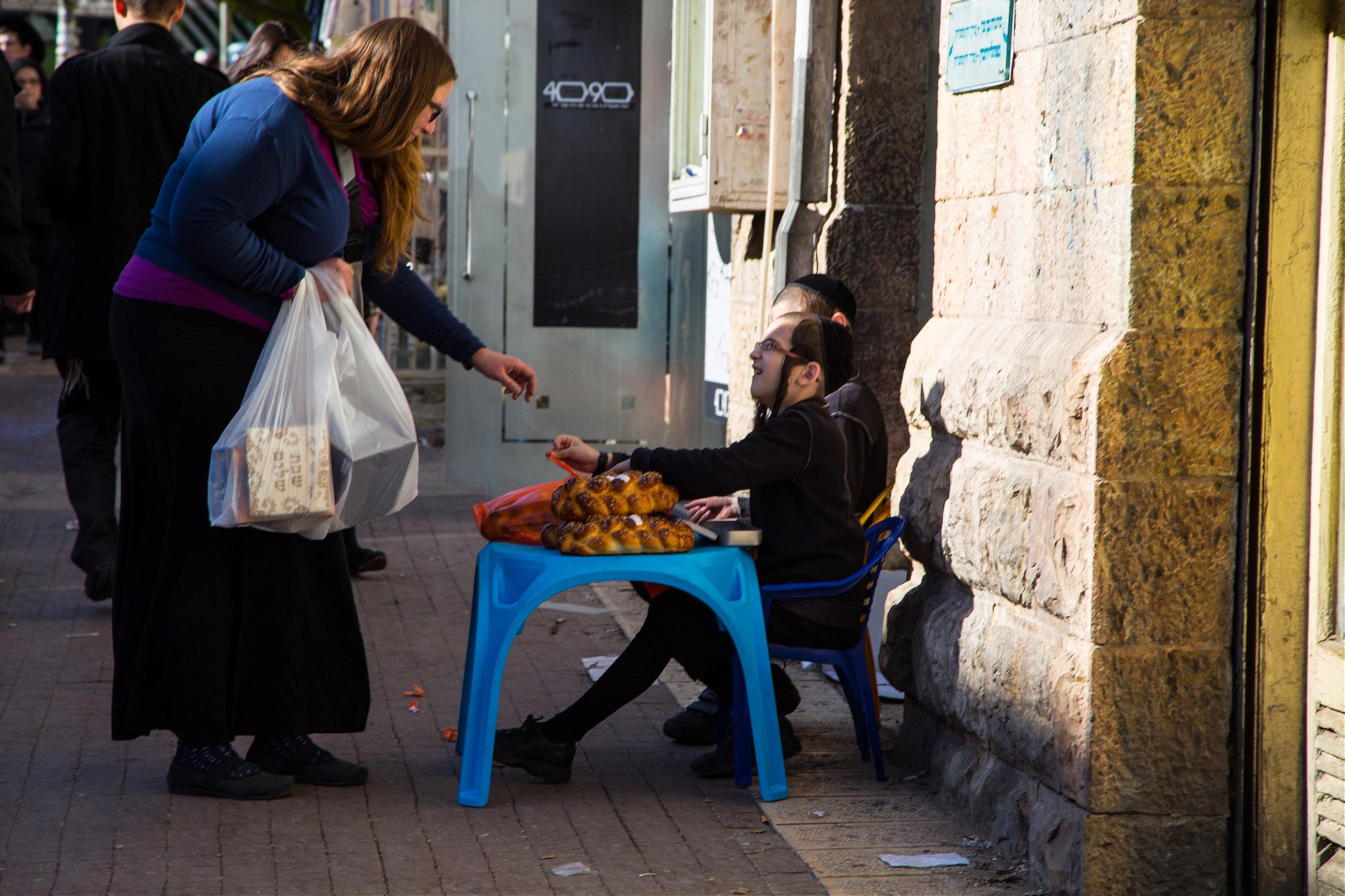
Mati still lives in his grandfather’s apartment above the bakery where he himself grew up with his eight brothers and sisters. He shows me through a series of chilly, empty rooms, the only decoration framed black-and-white family photos on the walls and newspaper clippings on the walls.
In one room, where he sleeps on a small cot, is the family tree. His children will not, however, be carrying on the tradition. One son is a policeman in Israel, the other has emigrated to the goldene medineh (the promised land): the U.S.

In another room is a display of photos of local and foreign dignitaries who have travelled to Lendners to bake their own challot–including Israel’s current prime minister, Binyamin Netanyahu. The staunchly secular leader, grinning with his braided sabbath bread in the heart of ultra-Orthodox Jerusalem, is a reminder of the unique, powerful symbolism Jewish food has in a fractured society, both for those who live in Mea Shearim and those are merely shopping.
